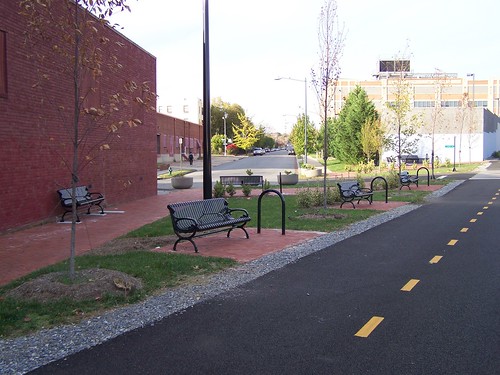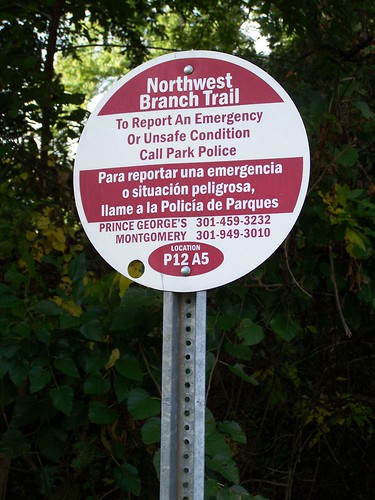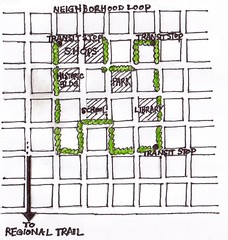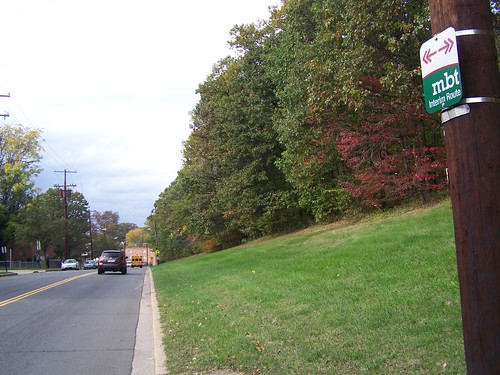Shared use paths (trails) and safety and marketing
I have been meaning to write about the management of Metropolitan Branch Trail in DC (again) because of some problems that I continue to observe, and today's Dr. Gridlock column, about pedestrian behavior on shared use paths (note that the transportation industry is starting to coalesce around the term "shared use paths" rather than "multi-use trails") gooses me to do so.
Dr. Gridlock writes:
The rules of the path are a bit different from the rules of the road, but one thing that doesn't change is the obligation to behave courteously and safely. The path between Prince George's County and Alexandria is a multiuse trail. Automobiles are not one of the uses.
Cooper's plan of action for walking along roadways without sidewalks is correct. Pedestrians need to stay out of the travel lanes and should walk on the left side, where they can see the oncoming traffic. On trails, however, pedestrians are part of the traffic. They are entitled to the right side of the pathway.
I think this could have been explained a little more directly, but it's fine. The problem comes about because trails mix occasional or one-time users with regular users, and too frequently, rules for movement on the shared use path are not posted. (I haven't been on the trail referenced in the article yet, so I don't know what kind of signage is posted, if any.)

Bethesda Trolley Trail wayfinding sign, Montgomery County, Maryland, adjacent to the Twinbrook Metro Station (Halpine Road). Map, regional plans and rules side of the sign. Note the instructions about how to behave on the trail.
This is something that bugs me to no end about DC's new Metropolitan Branch Trail. No rules are posted, and pedestrians frequently walk on the wrong side of the path or take up the entire path. But then, since the rules or "etiquette" aren't posted, how can people possibly know what they are supposed to do.
But there are other problems. There aren't trash cans in any of the sitting areas, and I have noticed a significant increase in the amount of trash present between R and W Streets and in the vicinity of the entrance from the Rhode Island Shopping Center. (Last Saturday I actually stopped and picked up a bunch of trash and recyclable bottles and cans in the major sitting area at T Street, because the amount of trash there and abutting the path was significant.)

T Street sitting area, Metropolitan Branch Trail.
Dog walkers don't always properly pick up after their animals.

Dog poop on the Metropolitan Branch Trail, DC.
And the amount of dog-based patronage indicates a need to include dog parks maybe (one area could be between K and L Street in the part of the path beyond the switchback entrance to the trail, another could be adjacent to the Rhode Island shopping center and Metro, and one probably ought to be installed somewhere in the vicinity of the Pepco substation and R Street, as part of the development plan for that parcel).

Emergency contact information sign posted on the Northwest Branch Trail, Prince George's County, between Rhode Island Avenue and Queens Chapel Road.
Because there are no rules signs, there is also no signage listing who to call in case of problems, either for safety or for other issues. For example, one of the fence panels blocking access to the railroad tracks in the vicinity of Rhode Island Avenue has been pushed out, and I have no idea of who to call.
I think the point isn't whether or not a trail is suburban, rural or urban (see "Promoting and developing a trail network across suburban, rual, and urban communities" from the American Journal of Preventive Medicine), it's whether or not there is a network of trails, that programming is provided, that the trails are marketed and promoted and signed, etc.

Flickr photo by lefauxfrog of an trail entrance sign on the Minuteman Bikeway in Arlington, Massachusetts.
Labels: bicycling, civic engagement, participatory democracy and empowered participation, transportation planning






0 Comments:
Post a Comment
<< Home